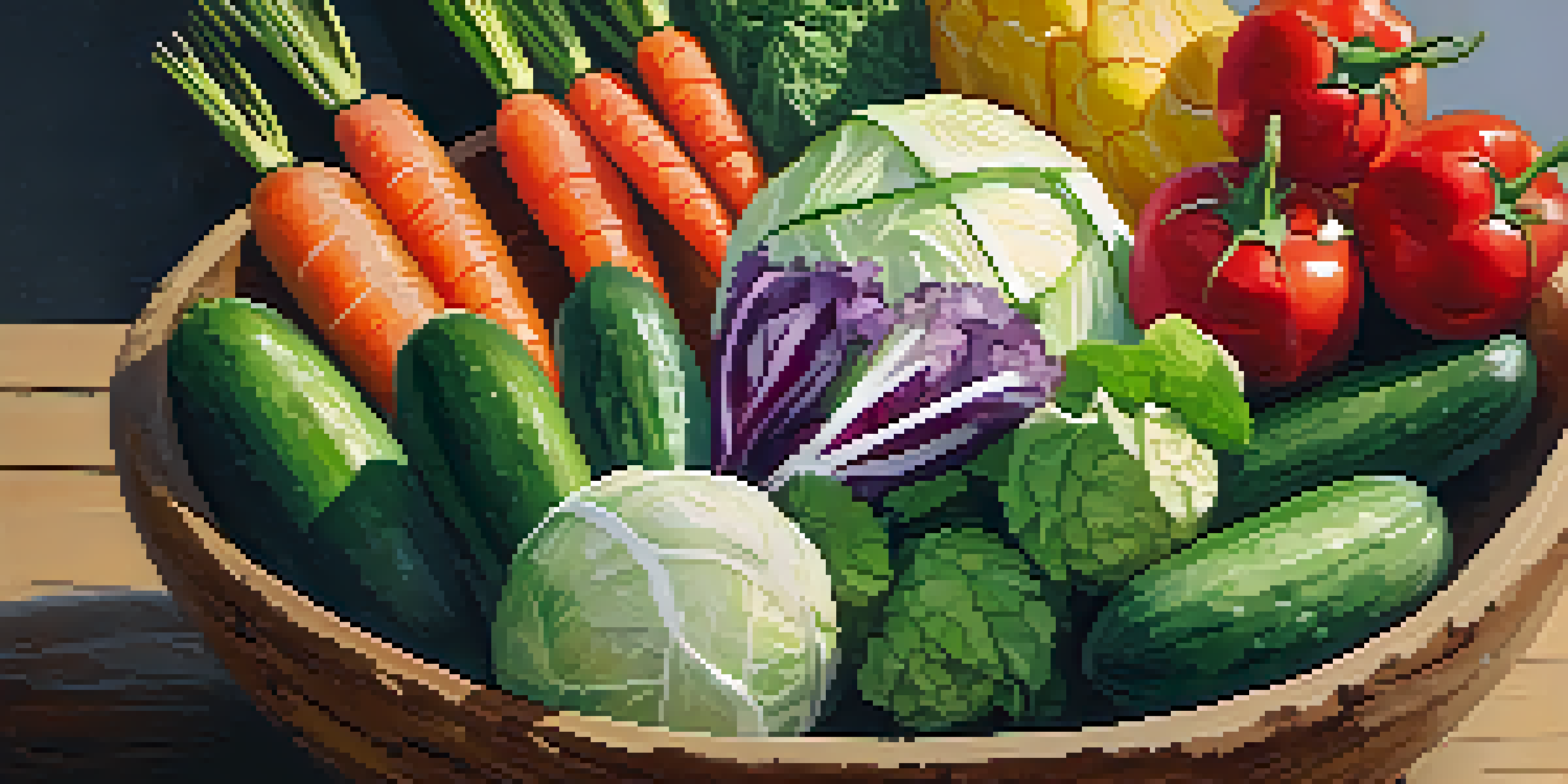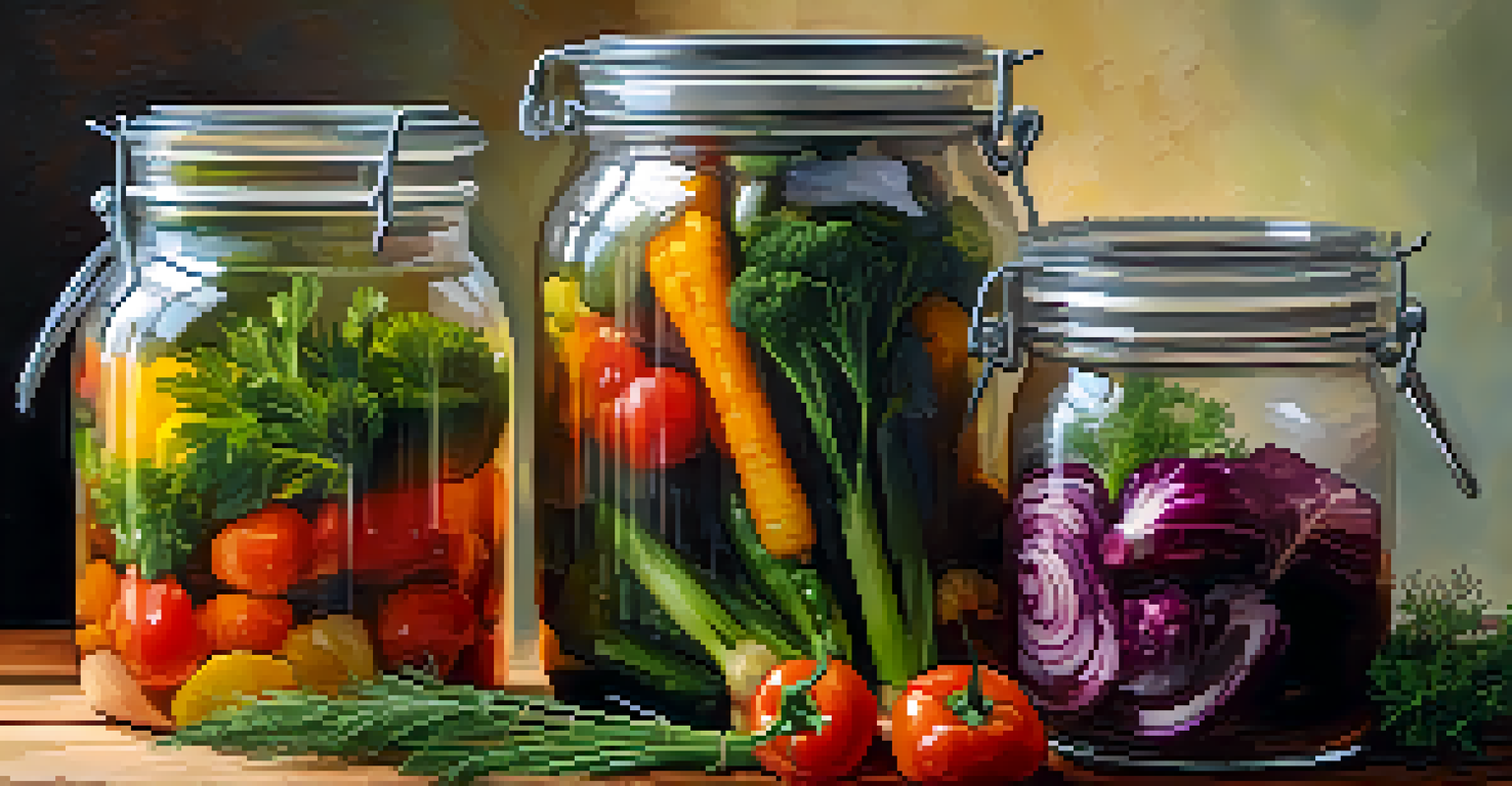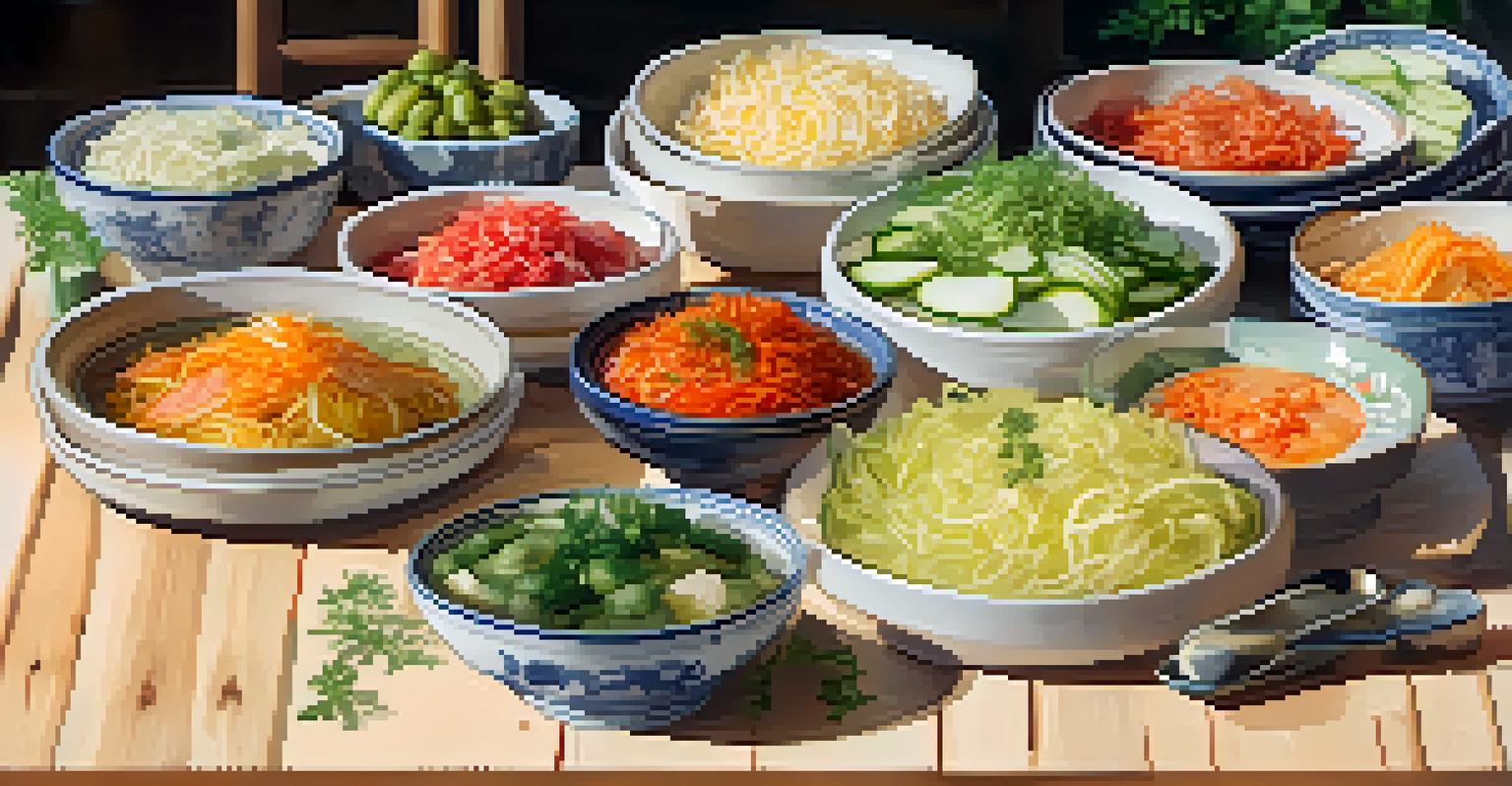Creating Your Own Fermented Vegetarian Foods at Home

Understanding Fermentation: The Basics Explained
Fermentation is a fascinating process where microorganisms, like bacteria and yeast, convert sugars into acids or alcohol. This transformation not only preserves food but also enhances its flavor and nutritional value. Think of it like giving your vegetables a tangy makeover that boosts their health benefits.
Fermentation is an ancient technique that provides a myriad of health benefits, enabling us to connect with our food on a deeper level.
When you ferment your food, you're not just extending its shelf life; you're also introducing probiotics—those friendly bacteria that support gut health. Imagine your intestines hosting a vibrant party of microorganisms, all working together to keep you healthy and happy.
In essence, fermentation is like nature's magic trick. It transforms ordinary ingredients into extraordinary delights, allowing you to explore flavors and textures you never knew existed. Learning the basics is the first step towards unleashing your inner food artist.
Essential Ingredients for Home Fermentation
To start your fermentation journey, you'll need some key ingredients. Fresh vegetables, salt, and water are the holy trinity of fermentation. For instance, cabbage can turn into sauerkraut, while cucumbers can become pickles—both delicious outcomes of this simple process.

Salt is crucial because it creates an environment where good bacteria thrive while keeping harmful bacteria at bay. Think of salt as the bouncer at a club, only letting the right guests in to have a good time. Plus, it adds flavor to your creations, making them even more appetizing.
Fermentation Enhances Food Flavor
Fermentation transforms ordinary ingredients into flavorful delights while preserving their nutritional value.
Don't forget about optional ingredients like spices, herbs, or even fruits! These additions can elevate your fermented foods to new levels of taste. For example, adding garlic and dill to your pickles can create a deliciously tangy treat that’s hard to resist.
The Fermentation Process: Step-by-Step Guide
Once you've gathered your ingredients, it's time to get started on the fermentation process. Begin by washing your vegetables thoroughly to remove any dirt or pesticides. Then, chop or shred them according to your preferred style. This is where you can get creative, mixing different vegetables for unique flavors!
The process of fermentation transforms food to enhance flavor and nutritional value, creating a vibrant, living food.
Next, you'll mix your vegetables with salt in a bowl, massaging it in to release their natural juices. This brine is essential, as it forms the liquid that keeps your veggies submerged and protected during fermentation. Imagine giving your veggies a nice spa treatment, prepping them for their flavorful transformation.
Once everything is combined, pack the mixture tightly into a clean jar, ensuring there’s enough brine to cover the veggies completely. Seal the jar and let it sit at room temperature for several days, checking daily for bubbles or a sour smell—which are signs that fermentation is happening. It’s like waiting for a delicious surprise to be revealed!
Monitoring Your Fermentation: Signs of Success
As your vegetables ferment, it's crucial to keep an eye on them. Look for bubbles forming in the brine, which indicate active fermentation. You might also notice a pleasant, tangy aroma filling your kitchen—definitely a good sign that things are progressing well.
Taste testing is important too! After a few days, take a small sample to see if the flavor is to your liking. If it’s still too crunchy, give it a few more days; if it’s tangy enough for your tastes, it’s time to transfer it to the fridge. It’s like checking on a cake in the oven—you want to make sure it’s just right.
Essential Ingredients for Fermentation
Fresh vegetables, salt, and water are key to starting your fermentation journey, allowing for delicious creations like sauerkraut and pickles.
Remember, every batch can be slightly different due to factors like temperature and the freshness of your ingredients. This unpredictability is part of the charm of home fermentation, making each jar a unique creation that reflects your personal touch.
Storing Your Fermented Foods for Maximum Freshness
Once fermentation reaches your desired flavor, it’s time to store your creations properly. Transferring your fermented foods to the refrigerator slows down the fermentation process, helping to preserve their taste and texture. Think of it as putting the brakes on a fun ride—keeping everything just right.
Using airtight containers is essential to prevent spoilage and maintain freshness. Glass jars work well, and you can even reuse old pickle jars or mason jars, making this both eco-friendly and economical. Plus, seeing those colorful jars lined up in your fridge is a feast for the eyes!
Your fermented foods can last for several weeks, sometimes even months, depending on the ingredients. Just remember to check for any off smells or signs of spoilage before diving in. With proper storage, you can enjoy your homemade creations long after the initial fermentation excitement fades.
Creative Ways to Use Your Fermented Foods
Now that you've mastered the art of fermentation, it's time to think about how to incorporate these flavorful creations into your meals. Fermented vegetables can add a delightful crunch and tang to salads, sandwiches, or tacos. Imagine that zing of flavor elevating your everyday dishes!
You can also use fermented foods as toppings for bowls or grain dishes, where their acidity can balance richer flavors. A scoop of sauerkraut on a hearty grain bowl can transform a simple meal into something special—like a little culinary surprise.
Health Benefits of Fermented Foods
Fermented vegetarian foods are rich in probiotics and essential nutrients, promoting gut health and overall well-being.
For those adventurous in the kitchen, consider blending your fermented veggies into dressings or dips. A tangy fermented salsa or a zesty vinaigrette can add depth to your meals, creating layers of flavor that will impress your family and friends. The possibilities are endless!
Health Benefits of Fermented Vegetarian Foods
Beyond the delightful tastes and textures, fermented vegetarian foods come with a host of health benefits. They're rich in probiotics, which support gut health and digestion. A happy gut can lead to improved overall well-being, making you feel lighter and more energetic.
Fermented foods are also packed with essential vitamins and nutrients. For instance, fermentation can increase the bioavailability of certain nutrients, making them easier for your body to absorb. Think of it as a nutritional booster shot—helping you get the most out of your veggies.

Moreover, incorporating fermented foods into your diet can enhance your immune system. By promoting a balanced gut microbiome, you’re setting the stage for better health. So, not only do you get to enjoy delicious flavors, but you’re also doing wonders for your body—now that’s a win-win!